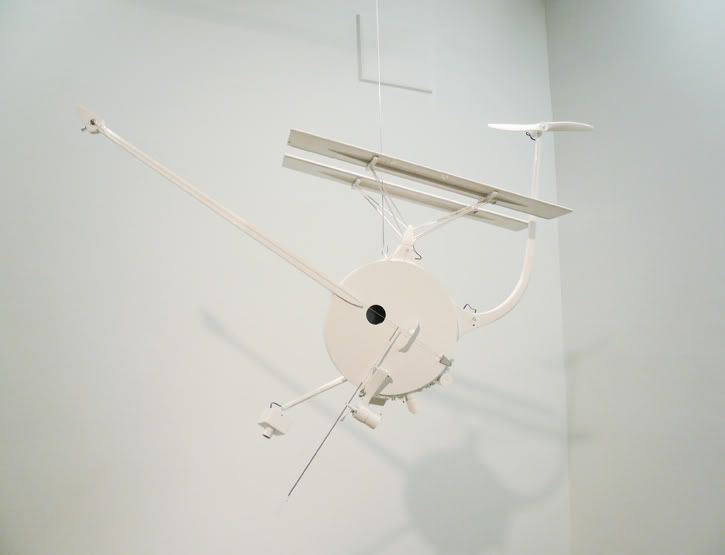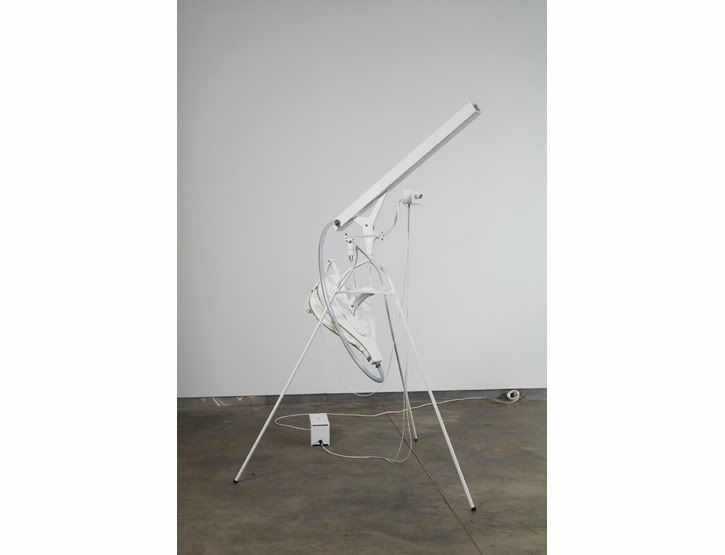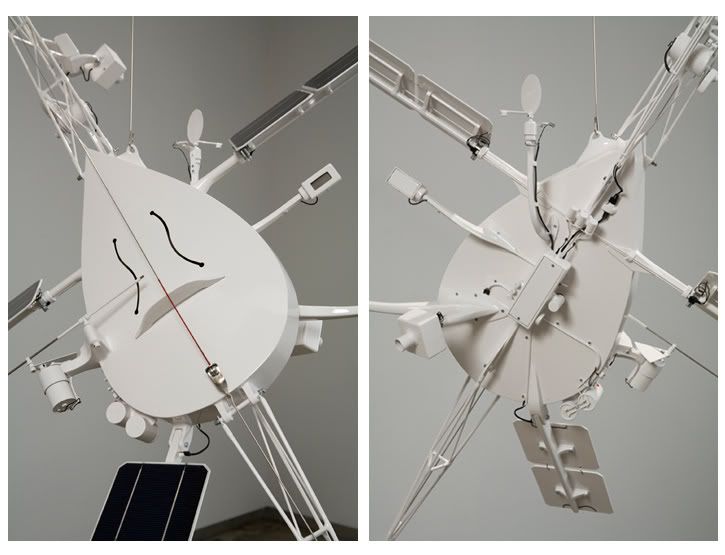
Bjorn Schulke
"Luftgitarre #3"
2008
Fiberglass, aluminum, wood, circuits, automotive paint, solar cells, motors, sensors
Approx. 50 x 35 x 12 inches
A friend recently observed that bitforms, a gallery dedicated to exhibiting work produced at the confluence of art and technology, doesn't get much critical due. In an art world preoccupied with "new media," such a venue should act as a critical lightning rod, but the "new media" most curators and editors have in mind is limited to unpolished video and digitally manipulated photography.
Somewhat cynically, I believe bitforms is overlooked because the art world remains leery of competent craft; the engineer-artist hybrids that bitforms promotes are nothing if not master craftsmen. Bjorn Schulke's current show of "absurd machines" is an excellent case in point.
The five machine-sculptures included in "uberschall" - the title translates as "supersonic" - all incorporate sound and react to the proximity and movement of the viewer. The three satellite-like works suspended from the gallery ceiling are elegant descendants of Alexander Calder's mobiles. Each references a different instrument: a banjo, violin and contrabass. Schulke smartly dubs the satellites Luftgitarres ("air guitars"). Motion detectors, photo-voltaic panels, propellers and antennae extend from each satellite-instrument's core and, depending on the viewer's location and distance, a mechanized rod occasionally plucks a steel wire on the face. The single, sounded note reverberates in the small gallery and, because the note is produced by so refined and esoteric an object, the tone seems downright otherworldly. The Luftgitarres' easy movement heightens this effect; when the silent propellers crank into gear, the satellite-instruments slowly rotate, each as lovely as it is disconcerting.

Bjorn Schulke
"Aerophon #2"
2003
Fiberglass, aluminum, plywood, plastic, steel, wire, paint
63 x 47 x 39 inches
Schulke includes two other machine-sculptures: "Supersonic," a wall-mounted fish-zeppelin that emits an impressive range of low-frequency sounds, and "Aerophone #2," a telescope-bagpipe. These contrivances are even more mysterious than the Luftgitarres, rivaling Jean Tingueley's eccentric creations. "Supersonic" is particularly cryptic. It does not move - though, like the other works, it responds to the movement and proximity of the viewer - but rests on wheels, suggestively. The sounds it produces, a cross between whale song and digital chatter, mirror its form. (It can be seen and listened to on the artist's website. Click here.)
Admiring Schulke's pointless inventions, I think of Carl Sagan and Ann Druyan's 1977 Voyager 1 disc (or golden record). As I wrote previously, I believe that disc to be "the culmination of modern art," "a gesture of hopeful optimism and naive hubris." Schulke's machine-sculptures can not equal that achievement in profoundity, nor are they intended to, but they are complementary...and remarkably beautiful works of art.

Bjorn Schulke
"Luftgitarre #1" (front/back details)
2008
Fiberglass, aluminum, wood, circuits, automotive paint, solar cells, motors, sensors
Approx. 66 x 62 x 30 inches
Photo credits: Schulke images ripped from bitforms website

No comments:
Post a Comment